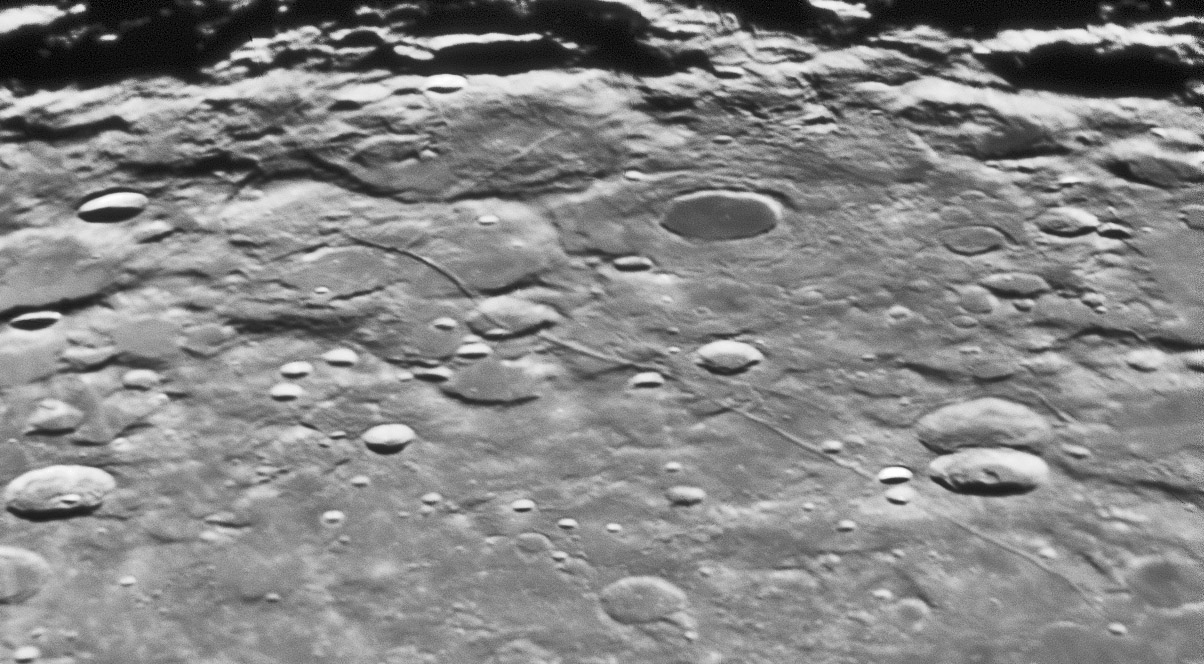
image by Mike Wirths
The 426 km long Sirsalis Rille is the longest on the Moon. It is considered a linear rille, but as Mike’s image shows, its southern (left) end curves as it cuts an apparent old crater east of Darwin. Another rille, nearly at right angles, faintly leads off the left end of the Sirsalis Rille and crosses the rim and floor of Darwin, immediately to the west. Other rilles seem to branch off the Sirsalis Rille on the floor of the old crater, and a Lunar Orbiter IV image confirms them. Back toward the center of the Sirsalis Rille yet another older and shallower rille segment branches from the main rille and extends about 45-50 km. The Sirsalis Rille is famous to lunar geophysicists (folks who study magnetic and gravity fields rather than geology) because it has the highest magnetic field found on the Moon. The best existing interpretation is that the rille is the surface expression of a buried long dike which may have fed magma to Oceanus Procellarum. Because the rille crosses debris from the Orientale impact, the rille, dike and lava in Procellarum must be younger than 3.85 billion years, the time when the Imbrium Basin formed, which is only slightly older than the Orientale Basin.
Technical Details:
18″ Starmaster + camera Lumenera Infinity 2-2 + 2.5X Powermate barlow + red filter; especially bad seeing.
Related Links:
Rükl charts 50 & 39
Pau’s view with nomenclature
Yesterday's LPOD: A Smarter Kepler
Tomorrow's LPOD: A Green Flow on a Green Sea
COMMENTS?
Register, Log in, and join in the comments.



